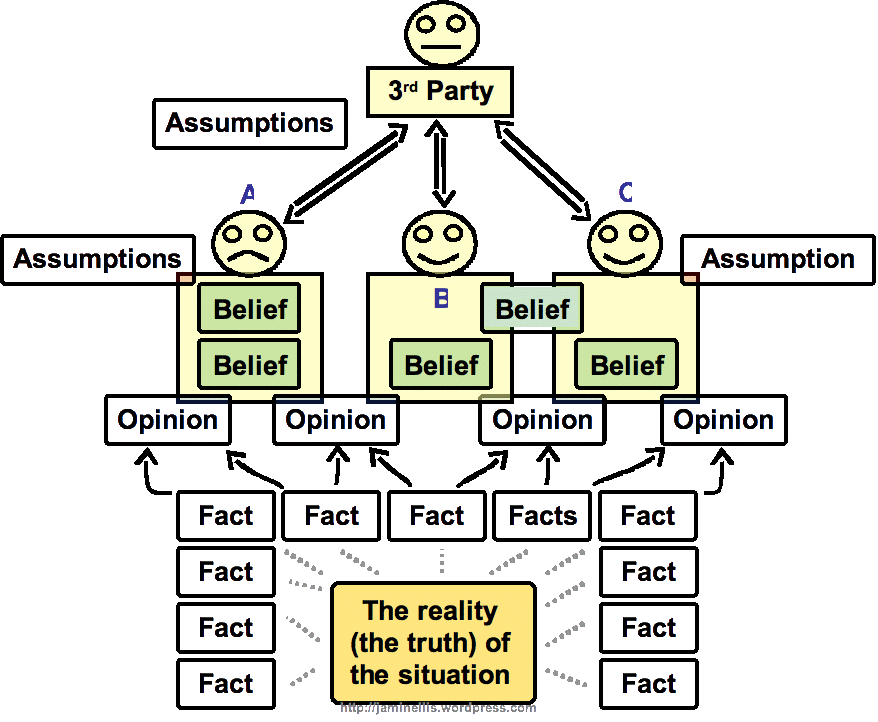Understanding the reality of the situation – Part I
Many transformational leaders talk about the importance of understanding the reality of the situation, from CEOs to life coaches. It is a foundational leadership skill, but not an easy one to acquire. A solid understanding of the mechanics of situational information is an essential tool for working out what needs doing and doing it, especially when it involves communication.
Let’s start with the situation and build out from there. First, there was the situation itself . Then there were the facts, lots of them. Then there were the people, who formed opinions about the situation. Then they acted and communicated. Very straight forward, until the bigger picture comes into the frame.

In most situations there are a number of people, with different perspectives and different subsets of the facts. Each person looks at those facts, forms an opinion and acts. All of the relevant facts are required before a valid opinion can be formed. Note that all of the facts are not required, but all of the relevant facts are. Spotting the difference is a fine art in itself, as is understanding when key facts are missing.
In the absence of facts, and sometimes even in the presence of them, people make assumptions. An assumption is something that is accepted as true, without proof. Facts are empirically verifiable (can be measured!), there is some form of proof. Without proof, you have an assumption, and assumptions can be wrong. Opinions are drawn from facts and assumptions, so a wrong assumption can lead to an incorrect opinion. For at least this reason, it is vital to clearly differentiate between facts and opinions, but most people rarely do. Opinions, right or wrong, become beliefs over the course of time. Beliefs are deeply held, but often detached from the original assumptions and facts.
Even with all the facts and no wrong assumptions, wrong opinions are sometimes formed. Why? Because opinions are shaped by our beliefs, by opinions from the past. What happens if we have incorrect beliefs or opinions, or if we inappropriately apply beliefs or opinions? More incorrect opinions, and eventually more incorrect beliefs.
Our beliefs and past opinions can bring a bias, or a prejudice. Prejudice can be a bad thing, history is riddled with examples of that. Prejudice can also be a good thing. I have a prejudice that men running towards me wielding a gun in one hand and a bottle of whisky in the other will harm me. I think that is a reasonably useful prejudice to have. It enables me to make a rapid decision which protects my personal safety. Holding that same opinion about all men, or about whisky drinkers in general would not be an appropriate or useful prejudice. Our own beliefs and prejudices can distort our perception. Other people’s beliefs and opinions can distort our understanding of reality, if we are not careful.
Hopefully you can see why the people labelled A, B and C in the diagram would come to different conclusions about the situation. Even for A and B, who have some common opinions, their different beliefs will bias their view. For B and C, who have some common belief and some common opinions, there will still be a difference. Even if they were looking at exactly the same facts, their opinions and beliefs may lead them to different conclusions. There are lots of reasons for this, I am sure that I have missed many of them here, but hopefully it conveys the idea. You can fill in the blanks.
Lastly, there is a poor third party trying to make sense of all of this information, from three different people. This could be me or you, trying to understand the reality of the situation. You can start to see where the problems arise, can’t you?


Great reading material! This was very helpful for my school project. Also, you used cool word choice, wait to go, Jamin!